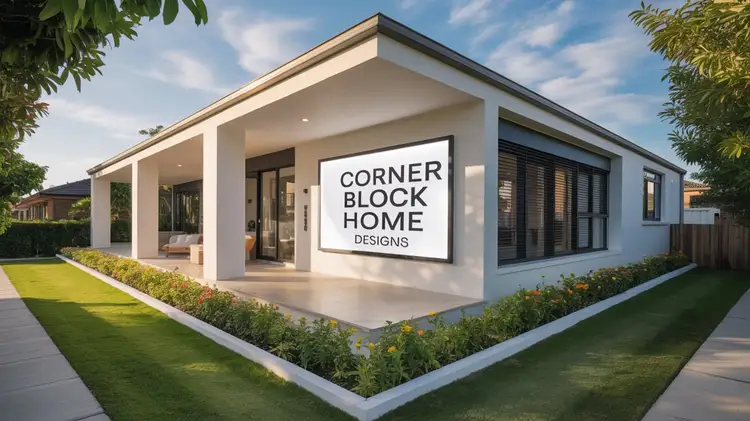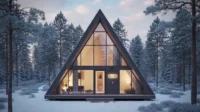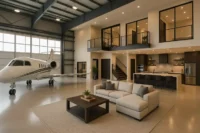Interior Design Business Cards | Custom Stylish Designs
Published: 24 Jun 2025
Introduction
When it comes to establishing a professional image, one of the most important tools an interior designer can have is an exceptional business card. Interior design business cards serve as a personal introduction to potential clients, partners and collaborators. The design, layout and aesthetic of your business card should reflect your unique style, your professionalism and your expertise as an interior designer.
In this comprehensive guide, we will explore the importance of interior design business cards, delve into top custom design ideas and provide insights on how to create business cards that leave a lasting impression. We will also discuss best practices for business card designs in the interior design industry and offer tips for making your card stand out.
Whether you are just starting your interior design career or are an established professional, this guide will help you understand how to use business cards effectively as a tool for networking, branding and client acquisition.
Why Are Business Cards Important for Interior Designers?
Business cards are a compact marketing tool that packs a lot of potential. They serve as a physical reminder of your work and can help make an immediate impact when meeting new clients, vendors or collaborators. Here are some key reasons why business cards are essential for interior designers:

1. First Impressions Matter
In the competitive world of interior design, first impressions are everything. A stylish, well-designed business card can make an immediate positive impact and set you apart from other designers. Your business card is often the first tangible representation of your work and the quality you bring.
- Showcase Your Style: Your business card should reflect your design style. Whether you specialize in modern interiors or vintage designs, the card’s design should give clients a sense of your aesthetic vision.
- Professionalism: A thoughtfully designed card tells potential clients that you care about the details and take your craft seriously.
2. Networking and Client Acquisition
In the interior design industry, networking is key. Whether you’re meeting potential clients or attending industry events, business cards offer an easy way to share your contact details and services.
- Quick Exchange: In moments where you have only a few seconds to make an impression, handing over a business card provides a quick, effective way to share information.
- Building Relationships: After you meet someone, handing them a business card makes it easier for them to contact you for future collaboration.
3. Branding and Marketing
A business card is one of the most cost-effective marketing tools you can use to promote your interior design business. When designed correctly, it reinforces your brand image and messaging.
- Brand Consistency: Your business card should align with your other branding materials, such as your website and portfolio, to ensure consistency and recognition.
- Promote Services: A business card can also act as a mini portfolio, showcasing your contact information, business name and the types of services you offer.
4. Memorability
In a world full of digital marketing, a physical business card is something people can hold onto and return to later. A well-designed business card can help ensure that clients remember you long after the initial meeting.
- Distinct Design: A creative and professional business card will make you stand out and ensure your name stays in the minds of your clients.
- Compact Portfolio: With limited space on a business card, you can use key design elements to briefly showcase your work and direct potential clients to your full portfolio.
Design Style | Features | Materials |
Minimalist | Simple fonts, clean lines, neutral color palette | Cardstock, matte finish |
Luxury Chic | Gold accents, elegant fonts, high-quality materials | Embossed cardstock, gold foil |
Creative Modern | Bold fonts, colorful accents, unique shapes | Glossy cardstock, textured finish |
Key Elements of a Stylish Interior Design Business Card
When designing your interior design business card, there are several key elements to consider. Each of these factors plays a role in creating a card that is not only functional but also memorable and professional.
1. Color Palette
The color palette you choose for your business card should align with your brand identity and showcase the vibe of your interior design style. Colors have a profound impact on the perception of your brand and can evoke certain emotions.
- Neutral Colors: If your design style leans towards minimalism, using neutral tones such as white, black, gray and beige can give your card a clean, sleek look.
- Bold Accents: If you specialize in modern or eclectic designs, using bold accent colors can make your card stand out and grab attention.
2. Typography
The font you use on your business card should reflect your design philosophy. Typography can range from elegant, classic fonts to more contemporary and bold styles.
- Legible Font: Choose a font that is easy to read and ensures your contact information is clear and visible.
- Unique Fonts: Use custom or unique fonts that reflect your personality as a designer while maintaining professionalism.
3. Logo Design
A business card is an opportunity to showcase your logo, which is a vital part of your brand identity. Your logo should be clean, simple and representative of your design ethos.
- Professional Logo: Ensure your logo design is high-quality and scalable, so it looks good on both large banners and small business cards.
- Brand Consistency: Your logo should be consistent with other materials like your website, portfolio and digital presence.
4. Visual Elements
Incorporating visual elements of your interior design work into the business card can help it stand out. Consider adding photos or illustrations that represent your style, whether it’s furniture, rooms or design accents.
- Portfolio Showcase: Use a small sample of your work on the back of the card to show your clients the types of projects you specialize in.
- Subtle Design Details: Adding subtle visual elements, like borders or patterns, can give your business card a unique touch without overwhelming it.
5. Material and Finish
The material and finish of your business card significantly influence how it’s perceived. Higher-quality materials reflect a higher standard of work and attention to detail.
- Card Stock: Choose a thicker card stock to ensure your business card feels premium. A sturdy card leaves a better impression than a flimsy one.
- Finish Options: Consider a matte finish for a more understated, professional look or a glossy finish for a card that stands out. Embossing or foil stamping can also add a luxurious touch.

Popular Business Card Design Trends for Interior Designers in 2025
In 2025, interior design business cards are evolving to reflect current trends in both design and technology. Here are some of the top business card trends to consider:
1. Minimalist Design
Minimalism continues to dominate interior design and business cards are no exception. Clean lines, neutral tones and simple typography help the card look professional while focusing on the most essential information.
- Simple Elegance: Avoid clutter and stick to the essentials—your name, contact information, logo and business name.
- Negative Space: Use negative space effectively to create a sleek organized look.
2. Bold Typography and Colors
For those in more contemporary or bold design fields, using strong typography and bright accent colors can convey creativity and innovation.
- Playful Fonts: Use custom fonts that showcase your brand’s personality. Make sure the fonts align with your design style.
- Contrast Colors: Pair bold fonts with vibrant colors for a more energetic feel.
3. Sustainable Materials
With a growing emphasis on sustainability, many interior designers are opting for eco-friendly business cards made from recycled materials, such as recycled paper or biodegradable plastic.
- Eco-Friendly Paper: Consider choosing recycled paper or sustainable materials for your business card to reflect your commitment to the environment.
- Plant-Based Ink: Opt for plant-based inks and non-toxic finishes for an eco-conscious design.
4. Interactive Business Cards
As technology advances, business cards are becoming more interactive. QR codes are often integrated to provide quick access to your portfolio, website or social media.
- QR Codes: A QR code can link directly to your online portfolio or contact page, making it easy for potential clients to get more information.
- Augmented Reality: For a truly futuristic card, augmented reality (AR) features can showcase your designs through your phone’s camera.
How to Create Your Own Interior Design Business Card
Now that you know the essentials for creating a stylish interior design business card, here’s how to create your own:
1. Define Your Brand Identity
Before you design your business card, define your brand identity. Consider the colors, fonts and visual elements that best represent your interior design style.
- Brand Vision: What message do you want to convey through your business card? Is it professional, quirky, traditional or modern?
- Target Audience: Consider your target market. Are you catering to high-end clients, commercial projects or small residential spaces?
2. Choose the Right Design Software
Use design software such as Adobe Illustrator, Canva or Photoshop to create your business card. These platforms offer templates and customizable features to make your design process easier.
- User-Friendly Templates: If you’re not familiar with design software, platforms like Canva offer templates specifically for business cards, including designs for interior designers.
- Custom Design: For a truly unique business card, you may opt for a custom design created by a professional graphic designer.
3. Select Your Paper Type
Select premium paper or eco-friendly material based on your design preferences. Ensure that the card stock is thick enough to give the business card a luxurious feel.
4. Print in High Quality
Choose a reliable printing service that offers high-quality printing with accurate color reproduction. Always ask for a sample print to ensure the final product meets your expectations.

FAQ
How much does it cost to print interior design business cards?
The cost can range from £20 to £100 or more, depending on the design, materials and quantity of business cards printed.
What is the best paper type for a business card?
Thicker cardstock with a matte or glossy finish is recommended for a premium feel. For eco-friendly options, use recycled paper.
How can I make my business card stand out?
Incorporate bold typography, unique design elements, quality finishes and even a QR code for added interactivity.
Should I include my portfolio link on my business card?
Yes, including a portfolio link or QR code on your business card is a great way to give potential clients easy access to your work.
Conclusion
Interior design business cards are an essential tool for establishing your professional identity and connecting with potential clients. A well-designed business card reflects your brand, your style and your attention to detail. Whether you choose a minimalist design, bold typography or a sustainable approach, your business card should be a reflection of your personality as an interior designer. Use this guide to help you create a stylish, functional and memorable business card that will leave a lasting impression on anyone you meet.

- Be Respectful
- Stay Relevant
- Stay Positive
- True Feedback
- Encourage Discussion
- Avoid Spamming
- No Fake News
- Don't Copy-Paste
- No Personal Attacks

- Be Respectful
- Stay Relevant
- Stay Positive
- True Feedback
- Encourage Discussion
- Avoid Spamming
- No Fake News
- Don't Copy-Paste
- No Personal Attacks





